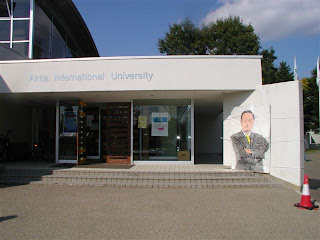“We all try our best / in our busy, busy lives / to write poetry.”
Haiku from Romanian Poets for AIU Festival 2011 (6)
2011/12/24
On October 9 and 10, 2011, AIU Festival was held at Akita International University(国際教養大学)in Akita prefecture(秋田県), Northern Honshu, Japan.
The festival, whose theme is HOOP ~世界とハチあわせ!~, had 3Philosophies : Academic(学問), Culture(文化), and Entertainment(楽しさ).
...
Some Romanian haiku poets also donated their haiga or haiku to the AIU festival in order to show their condolences, prayers, or hopes through the exhibition to the Japanese people.
Mrs. Maria Tirenescu inRomania kindly sent her haiku through Ms. Patricia Lidia’s e-mail on August 30.
She also kindly sent me two Christmas pictures this morning.
Here are her photos.


Let me post the latter part of her haiku.
A jump –
and the cat catches
the cricket
ひとっ飛び ―
そして猫が
コオロギをとらえる
Acacia in flower
in pitiless rain –
no bee
花の中のアカシア
無慈悲な雨に打たれて ―
蜂は見えず
Song of crickets –
everybody listening
under the new moon
コオロギの鳴き声 ―
誰もが耳を傾けている
新月の下で
Autumn evening –
two children wrangle about
a firefly
秋の夕べ ―
子供が二人口論する
ホタルのことで
At daybreak –
the bird’s footmarks
on the snowing table
(First Prize Contest HAIKU magazine)
夜明け ―
小鳥の足跡
雪が降っているテーブルに
Leaves everywhere –
in the pitiless rain
the abandoned nest
(HAIKU magazine)
至る所に葉 ―
無慈悲な雨の中に
捨てられた巣
Winter vespers –
the hermitage of the valley
surrounded by ravens
冬の夕暮れ ―
谷の修道院
オオガラスに囲まれている
New Year concert –
a boot without shoelace
at the broken paling
(“International Haiku New Year’s Festival 2011″)
ニュウ-イヤー・コンサート ―
靴ひものないブーツ
壊れたくいで
The brink of New Year –
the woodpecker pecking
an old cherry tree
(“International Haiku New Year’s Festival 2011″)
新年間際 ―
キツツキがつついている
桜の古木を
Deserted village -
cherries are still falling
on the wooden bench
(premiul Serban Codrin)
廃村 ―
サクランボがまだ落ちている
木製のベンチに
Poor sparrow!
No crust
in the rain…
(Haiku Reality)
かわいそうな雀!
パンの皮がない
雨の中で...
No cricket
in the moonless night –
only an old woman
(Haiku Reality)
コオロギがいない
月のでない夜 ―
たったひとりの老女
Translated into Japanese by Hidenori Hiruta
The next posting ‘Haiku from Romanian poets for AIU Festival 2011 (7)’ appears on December 31.
― Hidenori Hiruta











